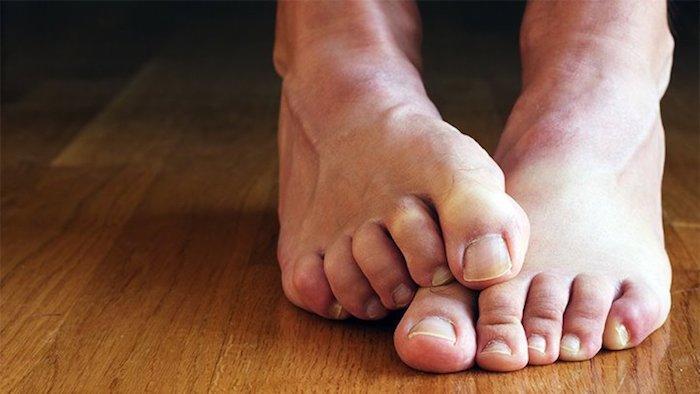Key Takeaways:
- Reshaping the nose can improve facial harmony and boost self-confidence.
- The nose comprises the upper bony part and lower cartilaginous part.
- The nasal structure includes nasal bones, septum, turbinates, and nasal cartilages.
- Nasal concerns can arise from genetics, trauma, or natural aging processes.
- Nasal reshaping combines artistic and scientific principles.
- Non-surgical options include injectable fillers and Botox.
- Traditional surgical techniques involve open or closed rhinoplasty.
- Innovative approaches include ultrasonic rhinoplasty, laser-assisted rhinoplasty, and 3D-printed nasal implants.
- Choosing a board-certified surgeon with specialization in nasal reshaping is important.
- Researching surgeon reviews and scheduling a consultation is recommended.
- Recovery process involves swelling, bruising, and adherence to post-operative instructions.
- Regular follow-up appointments and long-term maintenance are necessary for lasting results.
Reshaping the nose is a transformative process that can drastically improve facial harmony and boost self-confidence. Whether you are looking to correct structural abnormalities, enhance aesthetic appeal, or address functional concerns, nasal reshaping offers a range of options to suit your needs. In this comprehensive guide, we will delve deep into the science, techniques, and considerations involved in the art of nasal reshaping.
The Science Behind Nasal Reshaping
Before exploring the different techniques of nasal reshaping, it is crucial to understand the intricate anatomy of the nasal structure. The nose comprises the upper bony part and the lower cartilaginous part. The bony framework provides support and shape, while the cartilage plays a vital role in maintaining the nasal structure.
The Anatomy of the Nasal Structure
The nasal structure includes various components such as the nasal bones, septum, turbinates, and nasal cartilages. The nasal bones make up the upper bony part of the nose, providing strength and stability to the overall structure. The septum, a thin wall of bone and cartilage, divides the nasal cavity into two distinct halves. The turbinates, located inside the nasal cavity, help to humidify and filter the inhaled air. Finally, the nasal cartilages, including the upper lateral cartilages, lower lateral cartilages, and septal cartilage, contribute to the shape and support of the nasal framework.
Common Nasal Concerns and Their Causes
Many individuals seek nasal reshaping to address common concerns such as a deviated septum, nasal hump, nasal asymmetry, or a drooping nasal tip. These concerns can arise from various factors, including genetics, trauma, or natural aging processes. Understanding the specific causes of nasal concerns is essential for selecting the most appropriate technique for reshaping the nose.
Understanding the Science of Nasal Reshaping
Nasal reshaping, also known as rhinoplasty, involves the modification of the nasal structure to achieve the desired shape and size. This intricate procedure requires a keen understanding of facial aesthetics, as well as the technical skills to manipulate the nasal tissues with precision.
The science of nasal reshaping combines both artistic and scientific principles. Surgeons must consider factors such as facial proportions, skin thickness, and underlying nasal cartilage. Advanced imaging techniques, such as computerized simulations, can aid in visualizing the potential results and enhancing the surgical planning process.
Exploring the Different Techniques
There are various techniques available for nasal reshaping, ranging from non-surgical options to traditional surgical procedures. Each technique offers unique benefits and considerations, ensuring a personalized approach to nasal reshaping.
Non-Surgical Nasal Reshaping Options
Non-surgical nasal reshaping options provide individuals with a minimally invasive alternative to traditional surgical procedures. These techniques involve the use of injectable fillers or Botox to modify the nasal shape, correct minor deformities, and enhance overall facial harmony.
Dermal fillers, such as hyaluronic acid, can be strategically injected to contour and reshape the nose. This technique is particularly effective for correcting nasal asymmetry, filling in depressions, or adding volume to specific areas. Botox injections can also be used to relax the muscles around the nose, creating subtle changes in the contour.
Traditional Surgical Techniques
Traditional surgical techniques, such as open rhinoplasty and closed rhinoplasty, offer more extensive options for reshaping the nose. Open rhinoplasty involves making a small incision on the columella, the tissue between the nostrils, allowing direct access to the nasal structures. Closed rhinoplasty, on the other hand, involves incisions made inside the nostrils, resulting in no external scarring.
During the surgical procedure, the surgeon can modify the nasal bones, remove or reshape cartilage, or adjust the position of the nasal septum. The techniques used will depend on the individual’s specific concerns and desired outcomes.
Innovative Approaches to Nasal Reshaping
Advancements in medical technology have led to innovative approaches to nasal reshaping. Techniques such as ultrasonic rhinoplasty, laser-assisted rhinoplasty, and 3D-printed nasal implants offer new possibilities for achieving precise and customized results.
Ultrasonic rhinoplasty utilizes advanced ultrasound technology to precisely sculpt the nasal bones without damaging the surrounding tissues. Laser-assisted rhinoplasty involves the use of laser energy to refine the contours and shape of the nose. 3D-printed nasal implants are custom-designed to fit the specific nasal anatomy of the individual, providing a more natural and harmonious result.
Choosing the Right Surgeon
Choosing the right surgeon for your nasal reshaping journey is crucial to ensure safe and successful outcomes. A skilled and experienced surgeon will have the expertise and artistic vision to transform your nasal structure while maintaining facial balance and harmony.
Qualities to Look for in a Nasal Reshaping Surgeon
When searching for a nasal reshaping surgeon, several qualities should be considered. Look for a surgeon who is board-certified, as this certification ensures that the surgeon has met the highest standards of training, skills, and ethics. It is also essential to choose a surgeon who specializes in nasal reshaping procedures, as they will have extensive experience and expertise in this specific area.
Additionally, a good surgeon should have excellent communication skills and be able to understand your unique concerns and expectations. They should be honest and transparent about the potential outcomes and any risks involved in the procedure.
Researching Surgeons and Reading Reviews
Before making a final decision, it is essential to do thorough research on potential surgeons. Look for online reviews and testimonials from previous patients who have undergone nasal reshaping procedures with the surgeon. This can provide valuable insights into the surgeon’s skills, professionalism, and patient satisfaction rates.
Consultation Tips for Finding the Perfect Fit
Scheduling a consultation with a potential surgeon is a crucial step in finding the perfect fit for your nasal reshaping journey. During the consultation, be sure to ask the surgeon about their experience, view before and after photos of previous patients, and discuss your desired outcomes in detail. It is also essential to feel comfortable and confident in the surgeon’s abilities and communication style.
Recovery and Aftercare
What to Expect During the Recovery Process
The recovery process after nasal reshaping surgery requires patience and adherence to post-operative instructions. Swelling and bruising are common in the initial stages and can take several weeks to subside. Pain medications may be prescribed to manage any discomfort, and nasal packing or splints may be placed to support the healing nasal structures.
It is crucial to follow the surgeon’s guidelines regarding rest, wound care, and physical activities during the recovery period. Avoid strenuous activities, exposure to direct sunlight, and any actions that may impact the healing nose.
Post-Operative Care and Follow-Up Appointments
After nasal reshaping surgery, regular follow-up appointments will be scheduled to monitor the healing process and ensure optimal results. During these appointments, the surgeon will remove any nasal packing or splints and assess the progress of the reshaped nose. They will provide instructions on proper wound care and advise on when it is safe to resume normal activities.
Long-Term Maintenance for Lasting Results
To maintain the results of nasal reshaping surgery in the long term, it is essential to follow a few maintenance practices. Protecting the nose from trauma, wearing sunscreen to prevent sun damage, and avoiding smoking can all contribute to preserving the integrity of the reshaped nose. Regular check-ups with the surgeon can also help identify any potential issues early on.
By understanding the science, exploring different techniques, choosing the right surgeon, and following proper aftercare, you can embark on your nasal reshaping journey with confidence. The art of nasal rasps offers the opportunity for beautiful and transformative results that enhance both facial aesthetics and self-esteem. Take the first step towards achieving the nose you’ve always desired.



